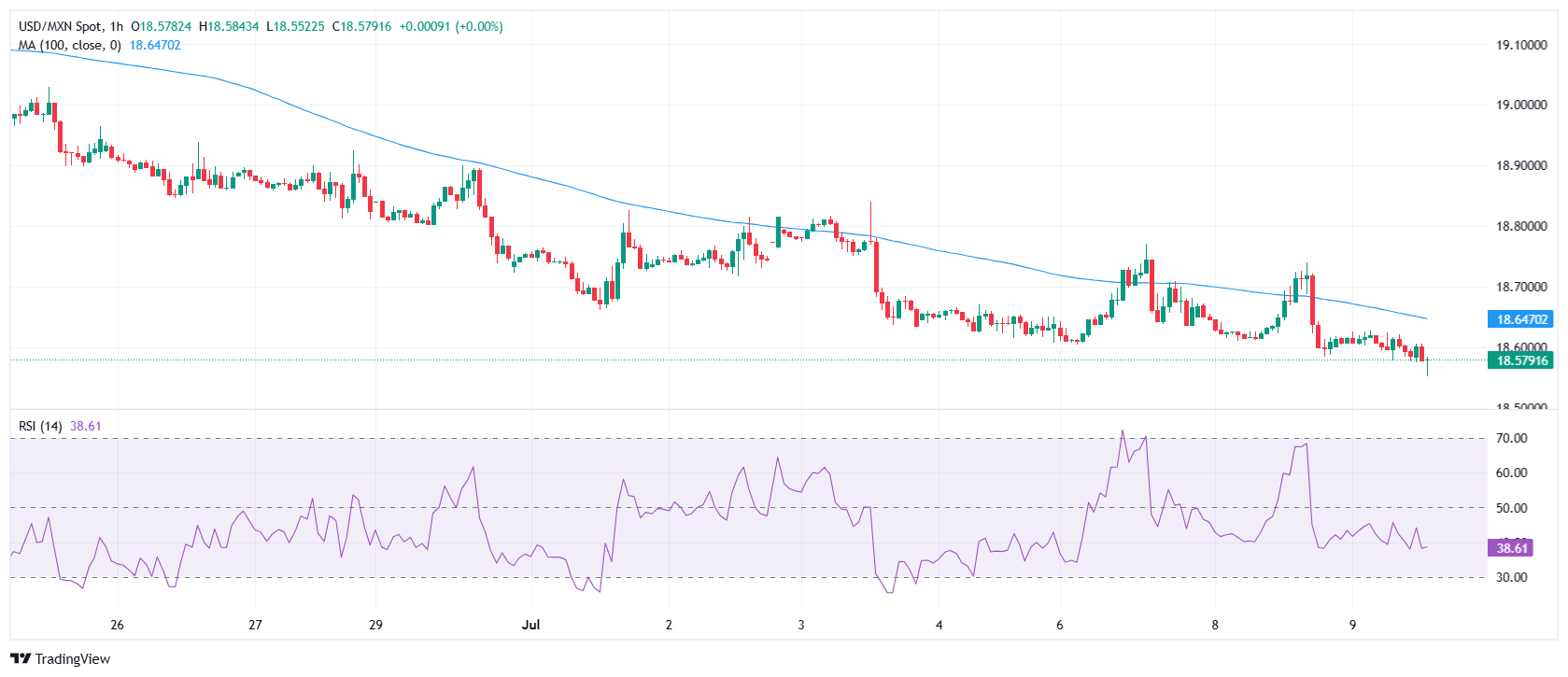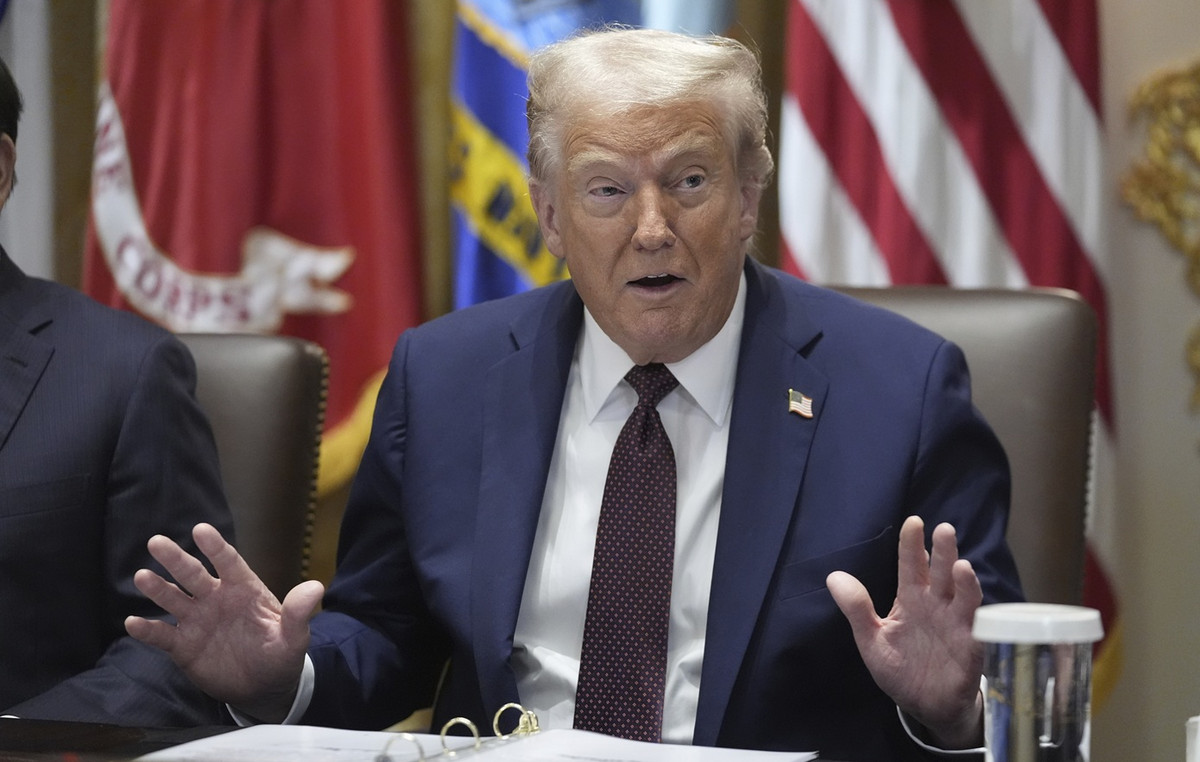- The USD/MXN has fallen to minimums of more than eleven months in 18.55.
- The US dollar ranges between profits and losses against new Trump tariff ads.
- The underlying inflation of Mexico rises to its highest level since April 2024.
- Donald Trump’s announcement to impose 50% tariffs on copper could impact the Mexican economy.
The USD/MXN gives ground for the second consecutive day this Wednesday, falling into the opening of Wall Street to 18.55, its lowest level since the beginning of August 2024. At the time of writing, the par is quoted over 18.57, losing 0.17% daily.
The US dollar hesitates with the new Trump tariff ads
The American dollar index (DXY) closed light losses yesterday after having risen at two -week maximums in the previous hours. The reason for this reversal was in the new Donald Trump tariff ads. The US president assured that he will impose tariffs of 50% to copper imports, adding that the rates will also raise the pharmaceutical products, being able to reach 200%. Market fears have caused the green ticket between warm profits and losses on Wednesday around 97.50.
The operators will be pending in the next few hours of new headlines on the tariffs and minutes of the Fed, since they could give clues of the central bank attitude regarding the expectations of inflation and the future cuts of fees. Although the minutes are expected to reflect a hard line posture, any pro-flexibilization comment would boost the rise dollar.
The underlying IPC of Mexico rises to 14 -month maximum
The Mexican peso takes advantage of the hesitation of the dollar to reach new maximums, backed by the persistence that has shown the underlying inflation of Mexico Posted on Wednesday. The indicator, which excludes volatile prices of goods and services, has risen to 4.24% annual in June, its highest level since April 2024. The general CPI, however, has moderated to 4.32% year -on -year since the previous 4.42%, although it has exceeded very slightly 4.31% estimated.
Banxico communicated at his last monetary policy meeting that would assess his upcoming rate cuts taking into account all the determinants of inflation, so that high prices could influence the decision of the Central Bank.
The effect of inflation has counteracted fears for repercussions that 50% tariffs could have on Mexican copper. Mexico is the third external copper exporter and its derivatives to the US, so the strong tax rise would force him to look for other markets if he does not reach an agreement with his northern neighbor.
USD/MXN Price levels
The general tendency firmly points down in all temporalities, while the 14 -day relative force index (RSI) remains below 40 in the short, medium and long term.
An extension of the decrease in USD/MXN will find initial support in 18.42, August 2024. Below, the pair has space to fall towards the psychological zone of 18.00 in the direction of 17.70, minimum of July 2024.
Upwards, the first resistance is in the 18.64 area, a mobile average of 100 periods in 1 hour graph. Above, it is necessary to break above the 100 -hour mobile average in 4 hours in 18.86 to try to recover the key level of 19.00.
USD/MXN 1 hour graphic

Mexican peso – frequent questions
The Mexican weight (MXN) is the most commercialized currency among its Latin American peers. Its value is widely determined by the performance of the Mexican economy, the country’s central bank policy, the amount of foreign investment in the country and even remittance levels sent by Mexicans living abroad, particularly in the United States. Geopolitical trends can also affect MXN: for example, the Nearshoring process (or the decision of some companies to relocate the manufacturing capacity and supply chains closer to their countries of origin) is also considered a catalyst for the Mexican currency, since the country is considered a key manufacturing center in the American continent. Another catalyst for MXN is oil prices, since Mexico is a key exporter of the raw material.
The main objective of the Central Bank of Mexico, also known as Banxico, is to maintain inflation at low and stable levels (in or close to its 3%target, the midpoint of a tolerance band between 2%and 4%). To do this, the bank establishes an adequate level of interest rates. When inflation is too high, Banxico will try to control it by raising interest rates, which makes the indebtedness of homes and companies more cooling, thus cooling the demand and the economy in general. The highest interest rates are generally positive for Mexican weight (MXN), since they lead to higher yields, which makes the country a more attractive place for investors. On the contrary, lower interest rates tend to weaken the MXN.
The publication of macroeconomic data is key to evaluating the state of the economy and can have an impact on the valuation of the Mexican weight (MXN). A strong Mexican economy, based on high economic growth, low unemployment and high confidence is good for MXN. Not only attracts more foreign investment, but it can encourage the Bank of Mexico (Banxico) to increase interest rates, particularly if this fortress is accompanied by high inflation. However, if the economic data is weak, the MXN is likely to depreciate.
As an emerging market currency, the Mexican weight (MXN) tends to rise for periods of risk, or when investors perceive that the general market risks are low and, therefore, are eager to participate in investments that carry a higher risk. On the contrary, the MXN tends to weaken at times of market turbulence or economic uncertainty, since investors tend to sell higher risk assets and flee to the most stable safe shelters.
Source: Fx Street
I am Joshua Winder, a senior-level journalist and editor at World Stock Market. I specialize in covering news related to the stock market and economic trends. With more than 8 years of experience in this field, I have become an expert in financial reporting.







